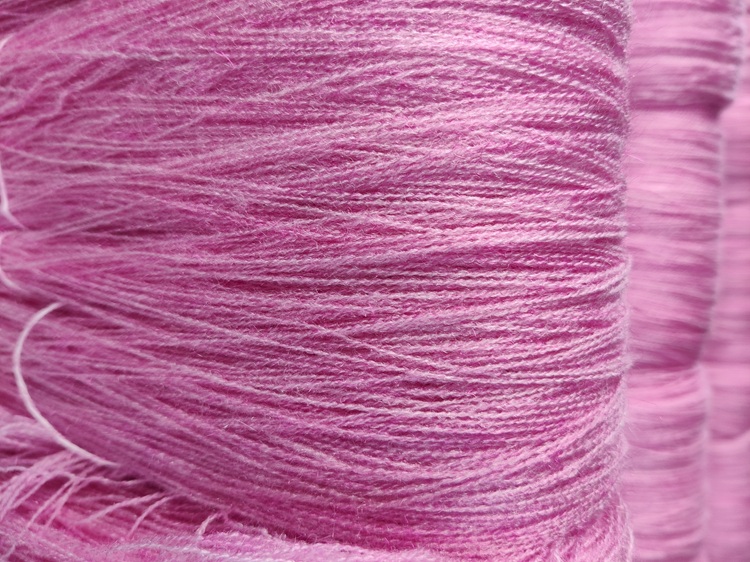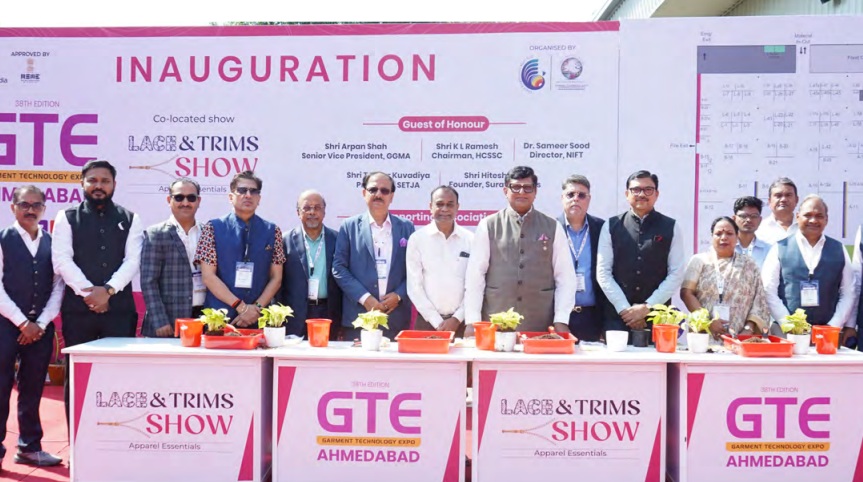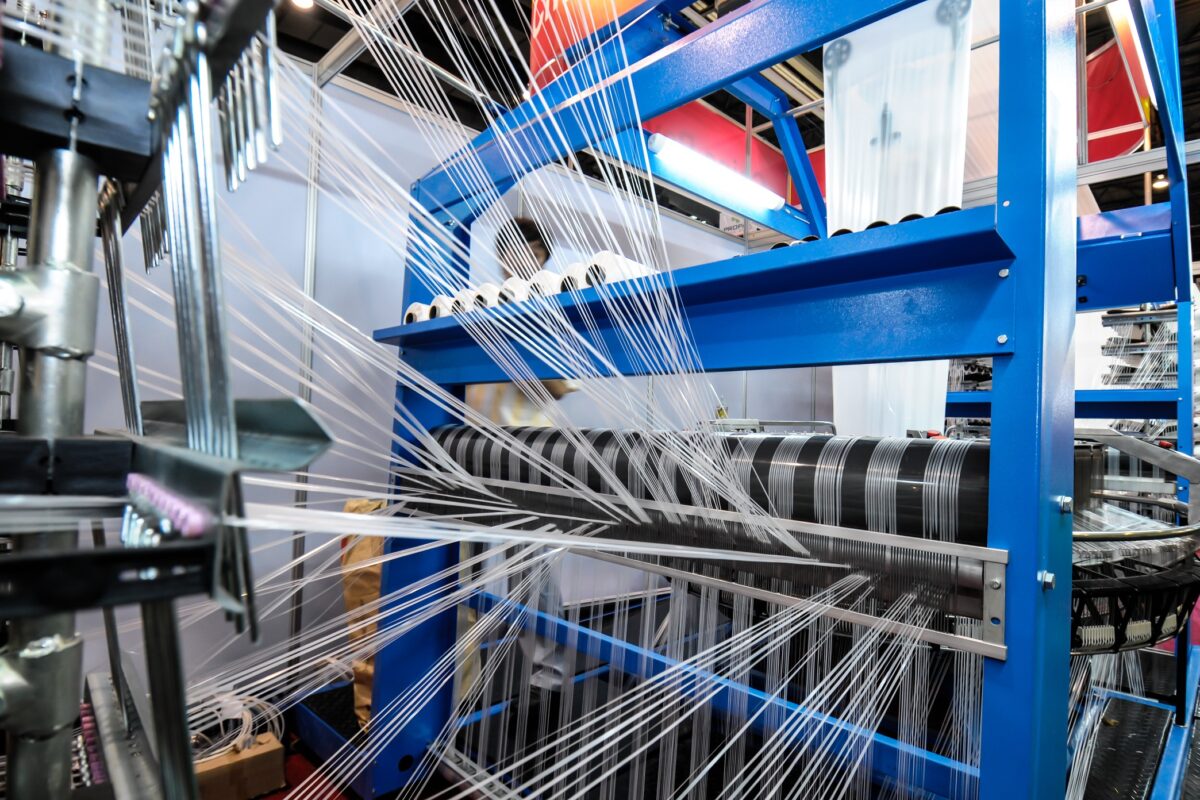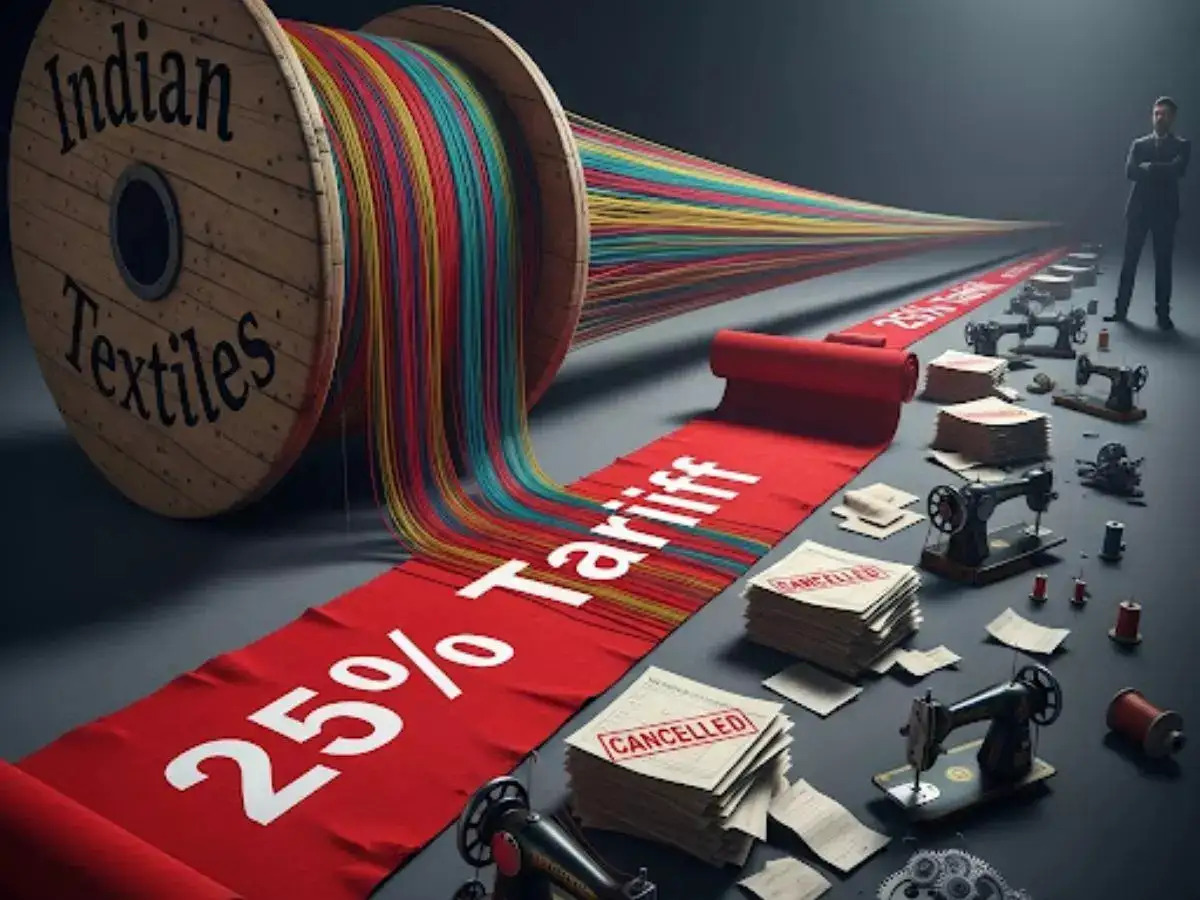FW
Central American nation Gautemala is turning out to be a favored sourcing destination for apparel and textiles in the US. Guatemala’s textile and apparel industry is known for its prowess in producing performance fabrics and sportswear and its clients span Walmart and Target to Old Navy and Gap to Puma and Reebok, among others.
The clothing industry in Gautemala accounts for roughly 19 per cent of all non-traditional product exports surpassing traditional shipments such as coffee and bananas. The country’s 150 apparel manufacturers, 39 textile mills and 200-plus trims and services firms can handle small, specialised runs as easily as they churn out mass-produced goods.
About 70 per cent of the apparel sector’s foreign investment is from Korea. Gautemala’s factories are more flexible, so they can easily accommodate whatever the client requests. They have speed-to-market compared to Asian countries. The turnaround is good and this is important for people in the fashion business. For some US companies, from the moment they place the order to when they receive it, it’s not more than six weeks.
As China increasingly falls out of favor with foreign companies, smaller markets are positioning themselves as a low-cost, high value solution for US brands and retailers. The US is the largest market for Gautemala.
Europlasma has launched Plasma Guard, a durable water repellent solution for sportswear and outdoor apparels. Belgium-based Europlasma, is a specialist in low pressure plasma technology, which is used for the coating of consumer electronics, medical devices, filtration products and functional textiles and textile products.
Plasma Guard is a 3D-treatment applied in vacuum by dry and clean plasma technology. It is designed to make the wearer’s shoe, glove or garment resistant to water and dirt, while maintaining its breathability, flexibility and light weight. This technology is a step towards putting social responsibility into practice and a significant step towards zero discharge of water and hazardous chemicals and a carbon neutral performance. It eliminates the use of cross-linking agents, chlorides, formaldehyde, and other toxic products and has a low environmental footprint.
Customers, by using only one kg of Plasma Guard chemical, can save five kg of traditional wet chemicals, more than 115 kg of waste water, and almost 80 kg of Co2 emission. Europlasma is a global technology leader in innovative nano-coating solutions based on low pressure plasma technology, for which it develops proprietary processes, designs and builds turnkey vacuum plasma treatment equipment and supplies process chemicals.
www.europlasma.be/
Designers and brands are turning to sustainable fashion as there is a global agenda to reduce waste in the fashion industry. Emerging fashion designers are demonstrating that they, as tomorrow’s leaders, are more in tune with solutions as they are creatively cashing in on environmental and economic opportunities by reducing and re-using textile waste. These designers are cementing a positive future for fashion. They are coming up with sustainable design techniques.
So with up-cycling and reconstruction design techniques they make fabrics by tufting damaged textiles and unraveled secondhand garments. Conventional textile production is one of the most polluting industries on the planet. It’s estimated the textile industry is responsible for as much as 20 per cent of the industrial pollution in our rivers and land.
Finding ways to curb environmental pollution caused by textile production starts with finding new ways to produce fabrics that don’t require toxins and large amounts of water, and which minimise harm to the ecology. One way is by the use of low-impact dyes.
Textiles made of organic cotton require less water to manufacture than conventional cotton textiles and are often more comfortable. Organic cotton is grown without chemical pesticides and fertilizers. Eco-friendly silk is produced primarily in India, North Asia and Africa. Sustainable products use methods that don’t kill the moth.
Bangladesh should immediately study the potential consequences of the mega trade deal, Trans-Pacific Partnership, on its economy, feel experts. As official Cecile Fruman, Director of Trade and Competitiveness, World Bank Group, points out, Bangladesh needs to understand the TPP. It also should analyse the consequences and risks associated with the deal.
Twelve Pacific Rim nations -- Canada, Chile, Japan, Mexico, the US, Australia, Vietnam, Malaysia, Brunei, Singapore, New Zealand and Peru - reached an agreement on the TPP in October 2015. As per the trade agreement it could reshape business practices across the world, potentially lowering tariffs for some goods and making foreign goods more readily available.
TPP countries represent 40 per cent of the global economy and a quarter of the trade. They are home to 800 million people, representing 12 per cent of global population. The deal may present challenges for least-developed countries. For instance, Bangladesh's exports may be affected by Vietnam's improved market access to the US.
Fruman has urged Bangladesh to diversify its industries from garments to others that will link and upgrade the global value chain.
"Tirupur, specialises in cotton knitted garments with over Rs 13,000 crores (1935.98 million USD) of apparel exports and an equal amount on account of domestic sale of inner garments thereby providing employment to over five Lakh people. Tirupur is called the ‘knits capital’ of India as it caters to almost all the famous retail brands across the globe"

Indian knitwear industry’s stooping growth percentage in the past years cannot be neglected despite innovations and experimentations in woven fabric. A study by consultancy firm Wisedge says that about half of the domestic apparel market in India is ruled by knitwear and about 45 per cent in exports. Once restricted to the knitwear-hubs of Ludhiana and Tirupur, the knitwear industry now has several big-small joints all across the nation like Bangalore, Rajasthan and Vapi in Gujarat.
Tiurpur continues to dominate
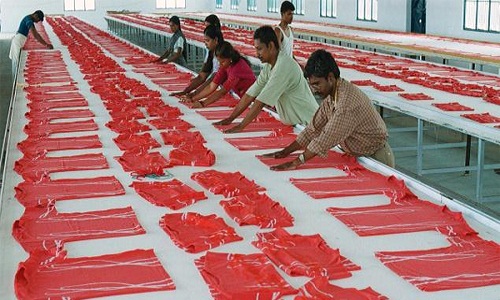
Tirupur, specialises in cotton knitted garments with over Rs 13,000 crores (1935.98 million USD) of apparel exports and an equal amount on account of domestic sale of inner garments thereby providing employment to over five Lakh people. Tirupur is called the ‘knits capital’ of India as it caters to almost all the famous retail brands across the globe.
In 2014 -15, knitwear exports from Tirupur touched Rs 21,000 crores (3104.3million USD) as compared to Rs 18,000 crores (2660.9 million USD) in 2013 -14, with a growth rate of 15.52 per cent in rupee terms. The share of knitwear exports from Tirupur in our country was 44.29 per cent. Nearly every international knitwear brand in the world has a strong production share from Tirupur. Some of the world’s largest retailers including C&A, Switcher, Wal-Mart, Primark, Diesel, ARMY, Tommy Hilfiger, M&S, FILA, Respect, H&M, HTHP, Whale, Nike and Reebok import textile items and clothing from Tirupur.
As Tirupur factories are taking utmost care in producing quality garments and maintaining delivery schedule, the retail stores prefer to source from Tirupur. The area provides the best quality and variety in T-shirts, jerseys, pullovers, cardigans, ladies blouses, dresses, children wear, sportswear, night dress, swim wear. The biggies of the region include the Poppy’s, Eastman Exports, and many others. With a sound policy direction and support from the Government, Textile trade from Tirupur have the potential to grow beyond Rs. 1,00,000 crores (14,780 million USD) by 2020 thereby creating additional 15 Lakh jobs in the near future. Investment and Focus towards the first four Ts namely Talent, Technology, Tradition and Tourism will undoubtedly make Tirupur march towards its mission of achieving the targeted business volume of Rs. 1 Lakh crores (14,780 million USD) by the year 2020.
Targets Rs 50,000 crores (7388.0 million USD) exports from India
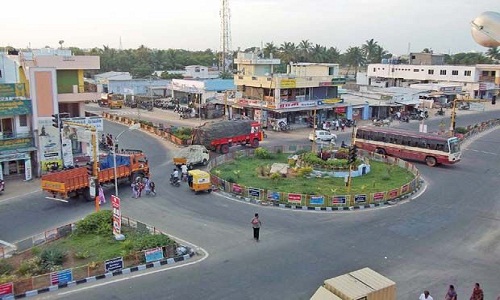
A Sakthivel, Chairman, Poppy Group and President, Tirupur Exporters Association (TEA) expects that knitwear exports from India will cross Rs 50, 000 crores (7388.0 million USD) this year. Saktivel says, the retail sector is growing at par with exports and now-a-days, the youth population in the country prefers to wear knitwear garments and is also quickly catching up in tier II and tier III cities. He observed by saying that India is mainly exporting cotton based garments and that too for summer season. If we diversify into manufacturing of synthetic garments, we can export for all seasons and this can increase our exports, he said.
On export front feels Tirupur exports will grow once Free Trade Agreement with EU, Comprehensive Economic Partnership Agreement (CEPA) with Canada, Comprehensive Economic Cooperation Agreement (CECA) with Australia takes place and advocated for early signing of the agreements. However, he feels recession in EU, severe competition from countries like China, Bangladesh, Vietnam, Indonesia and Cambodia, higher bank interest rate, shortage of labour, increase in wages and power cost, fluctuation in foreign currency, increase in transportation cost and following up of compliances are some major challenges.
Ludhiana, keeps its position
The other hub for knitwear, Ludhiana has seen various developments in the industry in its century old existence. It is all set with latest infrastructure and material facilities. The importance of knitwear industry in Ludhiana can be deduced from the fact that 85 to 90 per cent demand of woolens in India is supplied by the region. RMG business in Ludhiana is worth Rs 14,000 crores (2068.6 million USD) including both retail and export markets, from small and medium scale manufacturers, yet the quality is never compromised. The big retail names from the region are: Monte Carlo, Madame, Duke, Miniking, Sportsking among others.
Ludhiana’s main domain lies in winter wear especially in the form of latest fashion in coats and blazers. However, rising price of cotton and yarn, expansion of international labels into the domestic market, processing and innovative finishing systems and technology up gradation are the main hurdle faced in Ludhiana.
A delegation from the American Chamber of Commerce, consisting of members from the apparel and footwear sectors, visited Cambodia to discuss trade union laws. The delegation feels that there should be a rational way to decide within a factory who the real spokespersons are and that there should be a fixed process governed by law for dealing with labor disputes and if the process were violated people should be held accountable.
The visitors were of the opinion that proper implementation of laws would help reinforce confidence and predictability in the garment sector and maintain Cambodia’s brand image as a manufacturing destination. Cambodia was rocked by labor strikes in 2013 and 2014.
The delegation represented buyers from brands such as Walmart, New Balance and the clothing business PVH. They also discussed ways of moving the garment sector up the value chain as well as minimum wage deliberation process. The felt that there was expectation disconnect with wages always wanting to go up but not productivity.
Cambodia’s garment sector accounts for 80 per cent of the country’s total export revenues. However, working conditions and wages remain a source of dispute and unrest. Other pressures are the global economic crisis and increased competition.
Bangladesh is hosting a textile and garment machinery show from January 28 to 31, 2016. More than 1,000 textile equipment manufacturers, spinners, weavers and knitters, from 34 countries, including Bangladesh, will display a variety of state-of-the-art textile and garment technologies and machinery. Exhibitors will showcase the latest in textile and apparel technology.
Global brands such as Barudan, Jakob Muller, Karl Mayer, Loepfe Graf, Lonati, Oerlikon, Pai Lung, Picanol, Rieter, Santoni, LMW, Shima Seiki, Thies, Truetzschler and Zimmer will display and sell their products.
The participating countries include: Belgium, Brazil, China, Finland, Hong Kong, Indonesia, Italy, Japan, Malaysia, Sweden, Taiwan, Thailand, Turkey, the UK, the USA, France, Germany, India, Pakistan and Vietnam. Textile mills in Bangladesh cover a variety of spinning, weaving, dyeing, printing and finishing mills. Their contribution to the country’s gross domestic product amounts to 13 per cent. The sector has established a strong backward linkage industry for the country’s garment industry.
Textile mills in Bangladesh meet 90 per cent of the requirements for knitwear and 40 per cent of woven fabric requirements by garment factories. In doing so, they help the country save a substantial amount of foreign currency. Last year, exhibitors sold machinery worth $220 million at the fair.
Milano Unica has entered collaboration with the Council of Fashion Designers of America (CFDA) for a program that will enable American designers to work in Italian textile production mills to raise awareness for ‘Made in Italy’ techniques and methods of developing textiles.
Milano Unica is an international luxury textile trade fair with bi-annual trade shows. The Council of Fashion Designers of America, founded in 1962 works to strengthen the influence of American fashion in the global economy. It is an organisation of North American designers of fashion and fashion accessories.
Through this program Milano Unica can support American designers and show them the Italian way of craftsmanship. And for CFDA the partnership gives emerging American designers the chance to create custom fabrics with Italy’s best production houses. The designers will work with artisans to create their own signature textiles for their spring/summer 2017 collections, which will be shown at both the New York Fashion Week and with an installation at Milano Unica.
Accessories designer Gigi Burris and women’s wear designer Ryan Roche will participate in the first edition of the program, which will also include a menswear designer. Italy is well-known for fabrics. It has multigenerational companies with a lot of richness and heritage.
cfda.com/
China’s cotton imports continue to plummet. Its policies encourage textile manufacturers to use domestic supplies and low oil prices have driven increased use of synthetics. The country’s cotton imports are down 40 per cent from 2014. Imports could drop another 40 per cent in 2016.
China has built a large stockpile of cotton estimated at 11 million tons. China terminated the floor price policy on cotton in 2014 that paid farmers above market prices. Cotton prices became more market oriented as the price gap between domestic cotton and imported cotton sharply decreased.
Low crude oil prices recently had pushed down synthetic fiber prices and made it more competitive than cotton. China imported 4.15 million tons of cotton in 2013, but that dropped to 2.44 million tons the next year before falling to its current low level. Of the 894,000-ton quota China’s required to make available to textile companies, only 33 per cent goes to state-owned companies. But if the government does dump its reserve on the market, pushing prices below that of imported cotton, China could import close to, or even less than, the 894,000-ton quota of cotton in 2016. Import quotas were not so high last year as in previous years.
Owing to a rise in demand for Bangladeshi apparel products in international market, the country’s apparel export grew by 27.77 per cent in five years during the 2011-2015. According to Export Promotion Bureau (EPB) data, Bangladesh generated $19.21 billion from apparel export in 2011, and income soared to $26.60 billion in 2015. Export growth was driven by a rise in demand for local RMG products in the existing markets in US, UK, Germany, Spain, France, Italy and Canada, as well as in some newly created markets across West and East, especially in Japan, China, Brazil, Russia, Turkey and Australia.
According to RMG exporters, they successfully drew the attention of world’s leading apparel retailers over the years by offering very competitive prices taking advantage of the Chinese exporters’ reluctance in producing low-cost RMG goods. With RMG export worth $26.60 billion last year, Bangladesh has already become the world’s second largest apparel exporter.
Meanwhile, local apparel industry also improved its compliance standards with the help of the concerted efforts of two buyers’ platforms, the ILO, Germany, the Netherlands and the government following several major disasters at some garment factories in 2012 and 2013. According to Bangladesh Garment Manufacturers and Exporters Association (BGMEA), Apparel exports stood at $23.50 billion in 2013, $19.78 billion in 2012 and $19.21 billion in 2011. BGMEA said a number of Eastern European countries like Bulgaria and Czech Republic and Malta are showing promising outlook in terms of importing RMG goods from Bangladesh.
According to exporters, exploring more non-traditional markets to boost garment export is important for Bangladesh to ensure sustainable export growth in the apparel sector.


